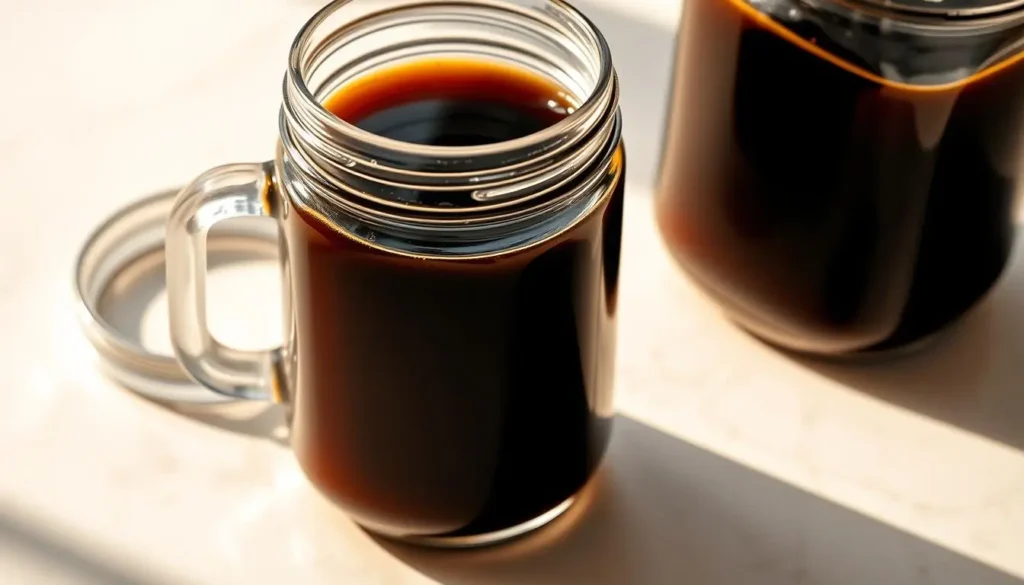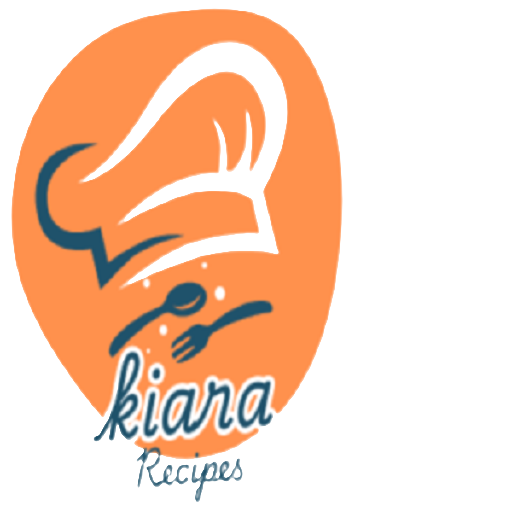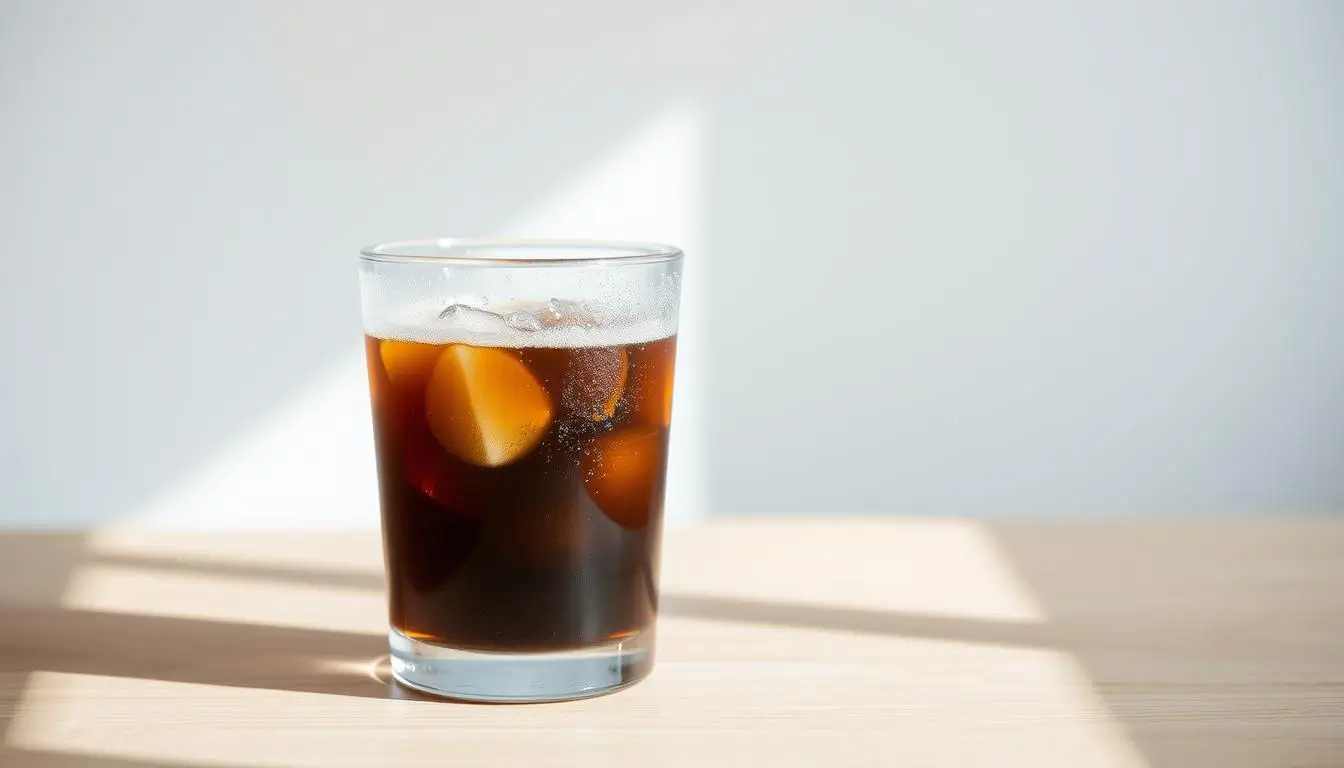Are you tired of spending money on expensive coffee drinks at cafes? You can make a delicious cold brew coffee at home with just two simple ingredients. Imagine sipping on a smooth, rich coffee drink on a hot summer day, without breaking the bank.
Brewing cold brew at home is easier than you’d think and doesn’t need much gear. With just coffee and water, you can create a perfect homemade iced coffee that’s tailored to your taste preferences.
Table of Contents
What Is Cold Brew Coffee?
You might have heard of cold brew coffee, but do you know what makes it special? Cold brew coffee is distinct from other types of coffee due to its brewing process. Cold brew is made without ever applying heat, setting it apart from traditional hot coffee. Instead, it’s steeped in cold water for an extended period, usually between 12 to 15 hours. This slow-brewing process results in coffee that’s slightly less acidic and bitter.
The unique brewing method of cold brew coffee contributes to its growing popularity. As you explore the world of cold brew, you’ll discover its distinct flavor profile and numerous benefits. Let’s dive deeper into the science behind cold brew and its advantages over regular coffee.
The Science Behind Cold Brew
The science behind cold brew coffee lies in its brewing process. When coffee beans are steeped in cold water, the extraction process is slower and more gradual compared to hot brewing. This results in a different balance of compounds being extracted from the coffee beans, leading to a smoother flavor. The cold brew method reduces the acidity and bitterness often associated with hot-brewed coffee, making it a favorite among coffee enthusiasts.
Benefits of Cold Brew Over Regular Coffee
Cold brew coffee offers several benefits over regular coffee. Its lower acidity makes it gentler on the stomach, and its smoother flavor profile is more palatable to those who find hot-brewed coffee too bitter. Additionally, cold brew is highly versatile; you can enjoy it on its own, diluted with water or milk, or as a base for various coffee drinks. The best cold brew method allows you to experiment with different flavors and ratios to suit your taste.
| Coffee Type | Brewing Time | Acidity Level |
|---|---|---|
| Cold Brew | 12-15 hours | Low |
| Hot Brewed Coffee | 5-10 minutes | High |
| Iced Coffee | Varies | Medium to High |

Cold Brew vs. Iced Coffee: Understanding the Difference
You’re probably familiar with iced coffee, but have you ever stopped to think about how it differs from cold brew? While both are popular choices for coffee lovers, especially during the warmer months, they are made using entirely different methods. Cold brew coffee is not just iced coffee; it’s a distinct brewing method that yields a smoother, less acidic flavor profile. You might be wondering what sets them apart and which one you should be drinking.
Brewing Method Comparison
Cold brew coffee involves steeping coarse-ground coffee beans in cold water for an extended period, usually 12 to 24 hours. You’re not just using any water; the quality of the water is crucial for a clean, refreshing taste. On the other hand, iced coffee is typically made by brewing hot coffee and then chilling it, often served over ice. You’re essentially cooling down a hot brew, which can lead to a slightly different flavor profile compared to cold brew.
Flavor Profile Differences
So, what’s the difference in taste between cold brew and iced coffee? You’re likely to notice that cold brew has a smoother, richer flavor because the cold brew process extracts fewer acids and oils from the beans compared to hot brewing methods. This results in a less bitter taste, making it perfect for those who prefer a mellow coffee experience. In contrast, iced coffee can sometimes retain a bit of the bitterness from the hot brewing process, though it’s still a refreshing drink on a hot day. You can experiment with both to find your preference.
| Characteristics | Cold Brew | Iced Coffee |
|---|---|---|
| Brewing Method | Cold steeping | Hot brew, then chilled |
| Flavor Profile | Smooth, less acidic | Can be bitter, refreshing |
| Preparation Time | 12-24 hours | Immediate |
You see, understanding these differences can enhance your coffee-drinking experience. Whether you prefer the smoothness of cold brew or the quick refreshment of iced coffee, knowing how they’re made and what to expect can make you a more discerning coffee drinker.
The Only 2 Ingredients You Need for Perfect Cold Brew
Making cold brew at home is straightforward, requiring just coffee beans and water. The quality of these two ingredients is crucial for a perfect brew. Whether you’re a coffee aficionado or a beginner, understanding the role of each component can elevate your cold brew game.
Selecting the Right Coffee Beans
The foundation of a great cold brew is its coffee beans. For cold brew, it’s recommended to use medium to dark roast coffee beans because they offer a richer, bolder flavor profile that stands up well to dilution. When choosing coffee beans, consider the grind size; a coarse grind is typically preferred for cold brew as it allows for the right extraction rate during the steeping process.
Coarse vs. Fine Grind
A coarse grind is generally recommended for cold brew because it provides the optimal surface area for extraction. Fine grinds can lead to over-extraction and a bitter taste, so it’s best to avoid them for cold brew.
Light vs. Dark Roast
For cold brew, a dark roast is often preferred because it offers a deeper, richer flavor. However, light roast can be used for a cleaner, more nuanced flavor profile. The choice between light and dark roast ultimately comes down to personal preference and the flavor profile you’re aiming for in your cold brew.
Water Quality Matters
Water is the other critical ingredient in cold brew, and its quality can significantly impact the final product. Use fresh, filtered water for your cold brew to avoid any off-flavors or contaminants that might ruin your brew. The purity of the water directly affects the taste, so don’t skimp on this essential ingredient.
| Coffee Bean Type | Roast Level | Grind Size | Flavor Profile |
|---|---|---|---|
| Arabica | Dark | Coarse | Rich, Bold |
| Robusta | Medium | Fine | Bitter, Harsh |
| Blend | Light | Coarse | Balanced, Smooth |
By focusing on these two ingredients and understanding their nuances, you can perfect your cold brew recipe and enjoy a superior cup every time.
Essential Equipment for Making Cold Brew at Home
Making cold brew coffee at home requires minimal equipment, making it an accessible and enjoyable process for coffee enthusiasts. You can start with basic tools you likely already have, and for those who want to elevate their cold brew game, there’s optional equipment available that can enhance the brewing experience.
Basic Tools You Already Have
You might be surprised at how much of the necessary equipment for making cold brew you already have in your kitchen. A large container, such as a mason jar, is essential for steeping the coffee grounds in water.
You likely have a fine mesh strainer or cheesecloth for filtering, and a measuring cup for measuring the coffee and water. These simple, everyday items are all you need to get started with making cold brew at home.
Optional Equipment for Enthusiasts
For those who are serious about their cold brew, there are a few pieces of optional equipment that can make a difference. A cold brew coffee maker with a built-in filter can simplify the brewing process, making it easier to produce large quantities.
Investing in a coffee grinder to freshly grind your beans can also enhance the flavor of your cold brew. Some enthusiasts might also appreciate a scale for precision in measuring coffee and water, or a refrigerator for storing cold brew at the optimal temperature.
Understanding what equipment you need and what’s optional can help you enjoy the process of making cold brew at home. Whether you’re just starting out or looking to upgrade your setup, knowing your options is key to a great cold brew experience.
Step-by-Step Cold Brew Coffee Recipe
Cold brew coffee is easy to make at home with just two ingredients and a bit of patience. The process involves a few straightforward steps that result in a smooth, rich coffee concentrate.
Preparing Your Coffee Grounds
To start, you’ll need to grind your coffee beans to a medium coarse consistency. The grind size plays a key role in proper extraction during steeping. If the coffee is ground too finely, it may become overly bitter due to over-extraction, while an overly coarse grind can lead to weak, under-extracted flavors.
Using a burr grinder is recommended for achieving a consistent grind size. If you don’t have a burr grinder, you can also use a rolling pin to crush the beans in a plastic bag or a manual grinder.
The Ideal Coffee-to-Water Ratio
The ratio of coffee to water is a critical factor in making cold brew. A common guideline is to combine 1 cup of coarse-ground coffee with 4 cups of water. This ratio can be adjusted to suit your taste preferences, but it serves as a good starting point.
To make a more robust concentrate, simply increase the amount of coffee compared to the water. Conversely, if you prefer a milder brew, you can reduce the amount of coffee.
Steeping Process
Once you’ve mixed the ground coffee and water in a suitable container, such as a mason jar, it’s time to let it steep. The steeping stage is when all the rich flavors truly develop. and the coffee extracts into the water.
Determining the Perfect Steeping Time
The steeping time can vary depending on your preference for strength and flavor. Cold brew usually needs to steep for anywhere between 12 and 24 hours. Steeping at room temperature versus in the refrigerator can affect the flavor profile. Room temperature steeping extracts more quickly, usually within 12 hours, while refrigerator steeping is slower and can take up to 24 hours.
Filtering Your Cold Brew
After the steeping process is complete, you’ll need to filter the coffee to separate the grounds from the liquid. This can be done using a fine-mesh sieve, cheesecloth, or a coffee filter. The goal is to remove as much of the sediment as possible to achieve a smooth coffee concentrate.
After straining, your cold brew is ready to drink. Feel free to adjust it with water or milk to your liking, and pour it over ice for a cool and refreshing treat.
Storing Your Cold Brew for Maximum Freshness
Once you’ve made your cold brew, storing it correctly is crucial. Proper storage will help maintain the flavor and freshness of your cold brew coffee.
Container Options
Select a clean, sealed container to keep your cold brew fresh. Glass containers with tight-fitting lids are ideal as they don’t impart flavors to the coffee. You can also use plastic or stainless steel containers, provided they are airtight.
Shelf Life in the Refrigerator
Your cold brew coffee concentrate will typically stay fresh for about a week when stored in the refrigerator. While it might remain safe to drink for a longer period, the flavor is best within the first week.
Freezing Cold Brew Concentrate
If you won’t be using your cold brew within a week, consider freezing the concentrate. Pour it into an airtight container or ice cube trays and store in the freezer. Frozen cold brew can be used in coffee drinks or thawed as needed.
Customizing Your Cold Brew Experience
Customizing your cold brew coffee is where the real fun begins, allowing you to tailor it to your taste preferences. You can start by adjusting the strength and flavor to your liking.
Dilution Techniques
One of the simplest ways to customize your cold brew is by diluting it. You can use water, milk, or a non-dairy alternative to achieve your desired strength. For a stronger coffee flavor, use less dilution, and for a milder taste, add more.
Adding Flavors and Sweeteners
Experiment with different flavors and sweeteners to give your cold brew a unique twist. You can add vanilla extract, cinnamon, or cocoa powder directly to your cold brew for added depth. If you prefer it sweet, consider using simple syrup, honey, or sugar.
Creating Cold Brew Variations
Cold brew coffee is a versatile base for various delicious drinks. You can create a Cold Brew Latte by mixing it with milk and a sweetener of your choice, then topping it with foam. Alternatively, you can make Cold Brew Mocktails by combining cold brew with juices or flavored syrups and garnishing with fruits or herbs.
Cold Brew Latte
A cold brew latte is a refreshing twist on the traditional latte, using cold brew coffee instead of espresso. Simply mix cold brew with milk, add a sweetener if desired, and top with foam.
Cold Brew Mocktails
Cold brew mocktails are perfect for those looking for a non-caffeinated or low-caffeine drink. Mix cold brew with your favorite juices or flavored syrups, and garnish with fruits or herbs for a refreshing mocktail.
Conclusion: Enjoy Your Homemade Cold Brew Year-Round
Preparing cold brew coffee at home is incredibly easy. With minimal effort, you can enjoy smooth, refreshing cold brew throughout the week. Now that you’ve mastered the basics of cold brew at home, it’s time to get creative with your easy cold brew coffee.
Try out various flavors and variations to discover your ideal cup. Try adding vanilla, cinnamon, or citrus to give your cold brew a unique twist. Feel free to modify the coffee-to-water ratio to match your personal taste
Cold brew coffee is perfect for hot summer days, but its rich flavor makes it enjoyable year-round. Whether you’re a coffee aficionado or just looking for a refreshing pick-me-up, making cold brew at home is a great way to elevate your coffee game. So go ahead, give it a try, and enjoy the smooth, rich flavor of your homemade cold brew.

